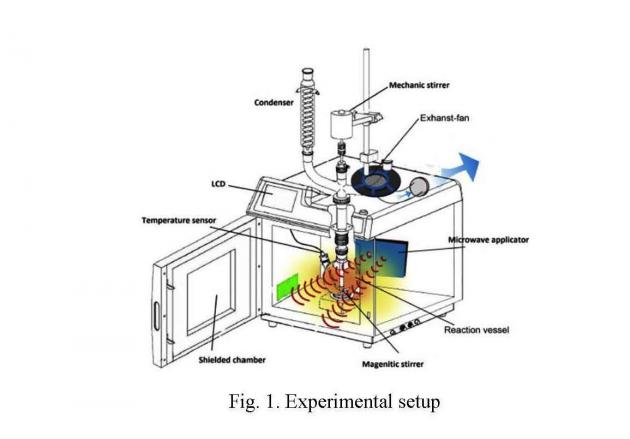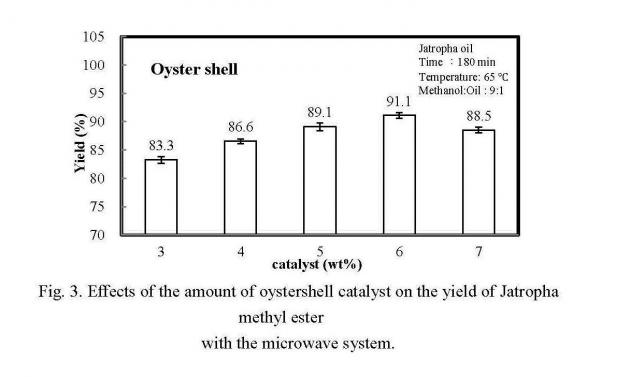What Factors Should We Consider with Biodiesel?*
In recent years, the increasing depletion of petroleum resources from environment and the worsening pollution problems have led to concerns regarding alternatives to petroleum fuels. It is by now well known that the EU has set a target of replacing 10% of conventional fuels with biofuels by 2020. As renewable, biodegradable, and nontoxic fuel research has continued to the present, biodiesel has attracted considerable attention over the past decade.To the best of our knowledge, relatively little is known about CBCs produced by burning butanol and waste cooking oil (WCO) biodiesel blends in diesel engines. In this study, we use butanol and waste cooking oil biodiesel blended with diesel to evaluate the fuel potential to decrease CBC emissions from diesel engines. Emission factors are compared and discussed. Additionally, the feasibility of biodiesel blends and optimum percentage of biodiesel in fuel blends are assessed.
What did we do?
In this study, six fuels are tested during the experiments. The base fuel is a premium diesel fuel (D100, 98%fossil diesel and 2% biodiesel) produced by Chinese Petroleum Corporation (CPC). In addition, the biodiesel (made by waste cooking oil) used for testing is produced by Greatec Green Energy Corporation in Taiwan. n-butanol is obtained from J. T. Baker (>99.5% purity). The diesel blend fuels used in this study are: B10 (10 vol% butanol), B10W10 (10 vol% butanol and 10 vol% biodiesel), B10W20 (10 vol% butanol and 20 vol% biodiesel), and B10W30 (10 vol% butanol and 30 vol% biodiesel), and B10W40 (10 vol% butanol and 40 vol% biodiesel), respectively.
The pollutant emissions from a diesel-fueled engine generator are examined. This diesel engine, made by Subaru (DY23-2D), is a four-cycle, air-cooled, overhead valve, single-cylinder. Moreover, the combustion system is direct injection and no further modification is needed. The bore and stroke are 70 mm and 60 mm, respectively. The displacement volume is 230 cc and the maximum output power is 2.8 kW at 3000 rpm. The torque is 10.5 Nm at 2200 rpm. Tests are performed at steady state condition with the engine running at 2200 rpm with torque and power outputs of 10.4 Nm (75% of the max load) and 2.1 kW, respectively, for the six test fuels.
What have we learned?
Biodiesel, a renewable and degradable fuel, is widely used due to its low emissions and toxicity. Biodiesel can be produced from animal fats or vegetable oils with methanol or ethanol as the catalyst via transesterification. Although blends of biodiesel/diesel/alcohols are well known in emission reduction, butanol has been recently found to have economic and sustainable potential as a substitute for ethanol in diesel blends. This study investigates the emissions of carbonyl compounds (CBCs) and regulated traditional pollutants that are produced from diesel engine combustion in steady-state conditions. Experimental results indicate that formaldehyde and acetaldehyde are the major and secondary carbonyls in the exhaust, which account for 84.6–69.7% of total CBC concentrations for all test fuels. It is also found out that using B10W40 instead of D100 is able to reduce PM and NOx by 46.5% and 31.8%, respectively. There is a decrease of form aldehyde concentrations in proportion to butanol-biodiesel content among the blends.
Future Plans
The outcome of using biodiesel-butanol-diesel blends as alternative fuels is encouraging. In general, the variation of carbonyl emissions of biodiesel in engines can be affected by several factors, such as engine load, biodiesel components, and driving cycle. Further research is necessary for a better understanding of formation of carbonyl from esters. More careful attention must be paid to non-regulated emissions from biodiesel blends.
Authors
Yuan-Chung Lin, Prof. at Inst. Environ. Eng., National Sun Yat-Sen University. Taiwan Deputy Executive Officer at Environ. Protec. & Safety Center yuanchung.lin@gmail.com
Kang-Shin Chen, Po-Ming Yang, Yuan-Chung Lin*, Kuang C. Lin, Syu-Ruei Jhang, I-Wei Wang
Additional information
Yuan-Chung (Oliver) Lin Ph.D.
Prof. at Inst. Environ. Eng., National Sun Yat-Sen University. Taiwan
Deputy Executive Officer at Environ. Protec. & Safety Center
TEL: +886-7-5252000 ext 4412
+886-7-5254412
FAX: +886-7-5254412
Cell: +886-935795228
The authors are solely responsible for the content of these proceedings. The technical information does not necessarily reflect the official position of the sponsoring agencies or institutions represented by planning committee members, and inclusion and distribution herein does not constitute an endorsement of views expressed by the same. Printed materials included herein are not refereed publications. Citations should appear as follows. EXAMPLE: Authors. 2015. Title of presentation. Waste to Worth: Spreading Science and Solutions. Seattle, WA. March 31-April 3, 2015. URL of this page. Accessed on: today’s date.




